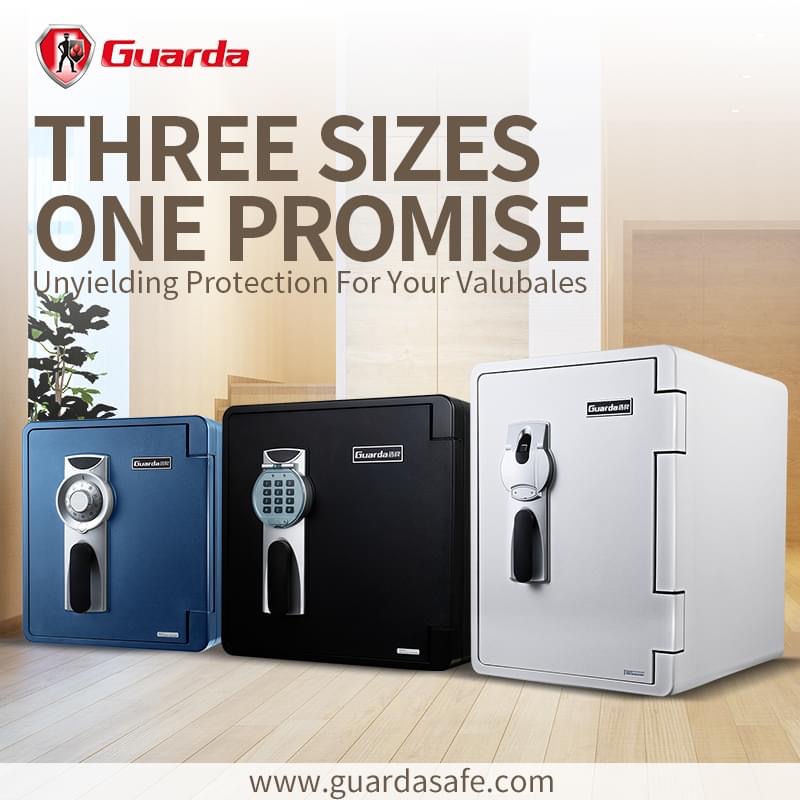In a world where unforeseen disasters can strike at any moment, safeguarding your most valuable possessions has never been more critical. Fireproof safes offer a reliable solution to protect essential documents, valuable items, and digital media from the devastating effects of fire. Choosing the right fireproof safe for your needs involves considering several key factors, including size, fire rating, lock type, and additional features. This comprehensive guide will help you make an informed decision to ensure your valuables remain secure.
Understanding Fire Ratings
One of the most important factors to consider when choosing a fireproof safe is its fire rating. Fire ratings are determined by independent testing organizations such as Underwriters Laboratories (UL) and Intertek. These ratings indicate how long a safe can protect its contents at a specified temperature.
Ratings examples include:
- UL Class 350 1-Hour: Protects paper documents for one hour at temperatures up to 1700°F.
- UL Class 350 2-Hour: Provides paper documents for two hours at temperatures up to 1850°F.
- UL Class 125: Designed to protect magnetic media, maintaining internal temperatures below 125°F.
When selecting a safe, consider what you need to store. Paper documents require less stringent protection than magnetic media, which can be damaged at lower temperatures.
Size and Capacity
The size and capacity of a fireproof safe are crucial considerations. Safes come in various sizes, from compact models for small documents and jewelry to larger units capable of storing extensive records, electronics, and other valuables. To determine the appropriate size, make a list of the items you intend to store and consider any future needs.
1. Small Safes: Ideal for passports, birth certificates, and small valuables.
2. Medium Safes: Suitable for larger documents, external hard drives, and some electronic devices.
3. Large Safes: Best for bulk storage, including large documents, multiple electronic devices, and larger valuables.
Locking Mechanisms
The type of locking mechanism on a fireproof safe impacts both security and convenience. There are several options to choose from:
1. Key Locks: Simple and reliable but require keeping track of a physical key.
2. Combination Locks: Traditional and do not require batteries or power. They offer reliable security but can be slower to open.
3. Electronic Keypads: Provide quick access and can be programmed with multiple user codes. They require batteries but are convenient and secure.
4. Biometric Locks: Use fingerprint recognition for high security and quick access. These locks offer advanced security but are generally more expensive.
Consider your security needs and the level of convenience you desire when choosing a locking mechanism.
Construction Quality
The overall construction quality of a fireproof safe is another essential factor. High-quality safes are made from durable materials and feature robust construction to withstand physical impact and environmental conditions. Look for safes with the following features:
1. Solid Construction: Provides durability and resistance to tampering.
2. Reinforced or concealed hinges and Bolts: Enhance the safe’s security and integrity.
3. Water Resistance: Some fireproof safes also offer water resistance, providing additional protection against flooding and water damage.
Additional Features
Modern fireproof safes come with a range of additional features that can enhance their functionality and security:
1. Adjustable Shelves and Drawers: Allow for organized storage and customization.
2. Interior Lighting: Makes it easier to see and access items inside the safe.
3. Alarm Systems: Some safes include alarms that activate if the safe is tampered with or moved.
4. Portability: Smaller safes can be more easily transported, while larger safes often come with pre-drilled holes for bolting to the floor for added security.
Placement and Installation
Where you place your fireproof safe is also an important consideration. Ideally, the safe should be located in a place that is easily accessible in an emergency but discreet enough to avoid attracting attention.
1. Home Use: Common locations include bedrooms, home offices, or closets. Ensure the safe is not exposed to high moisture areas to avoid potential damage.
2. Business Use: Offices and storage rooms are typical locations. For larger safes, consider bolting them to the floor to prevent theft.
Budget Considerations
Finally, consider your budget. Fireproof safes range in price depending on their size, fire rating, locking mechanism, and additional features. While it might be tempting to opt for a less expensive model, investing in a high-quality safe can provide better protection and peace of mind in the long run.
1. Entry-Level Safes: Offer basic protection and are suitable for limited storage needs.
2. Mid-Range Safes: Provide a good balance of features, size, and fire rating, making them ideal for most households and small businesses.
3. High-End Safes: Offer advanced security features, larger capacity, and higher fire ratings, suitable for extensive storage needs and higher security requirements.
Choosing the right fireproof safe involves careful consideration of various factors, including fire rating, size, locking mechanism, construction quality, and additional features. By understanding your specific needs and evaluating these factors, you can select a fireproof safe that provides optimal protection for your valuable possessions. Investing in a high-quality fireproof safe is a proactive step towards safeguarding your important documents, valuable items, and peace of mind against the unpredictable threat of fire.
Guarda Safe, a professional supplier of certified and independently tested fireproof and waterproof safe boxes and chests, offers the much-needed protection that homeowners and businesses require. If you have any inquiries about our product lineup or the opportunities we can provide in this area, please don’t hesitate to contact us directly for further discussion.
Post time: Sep-02-2024



